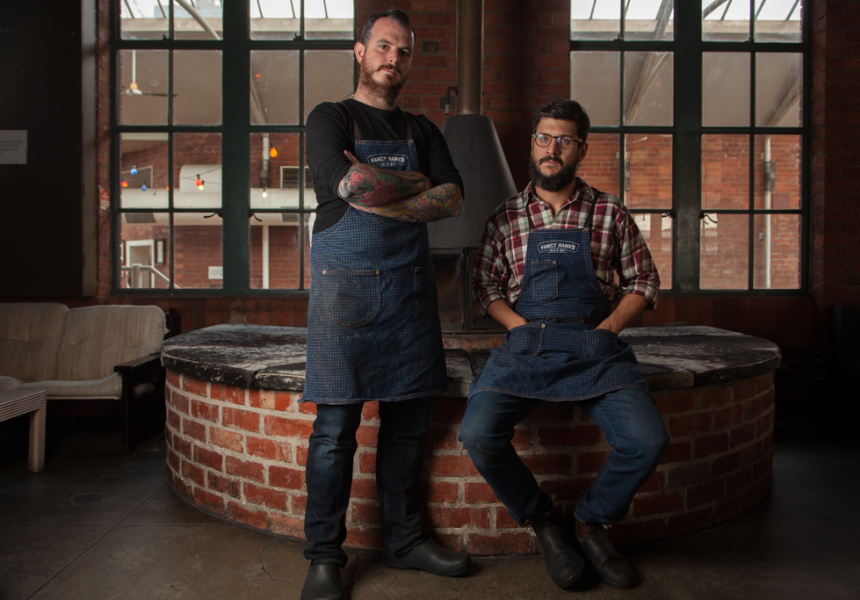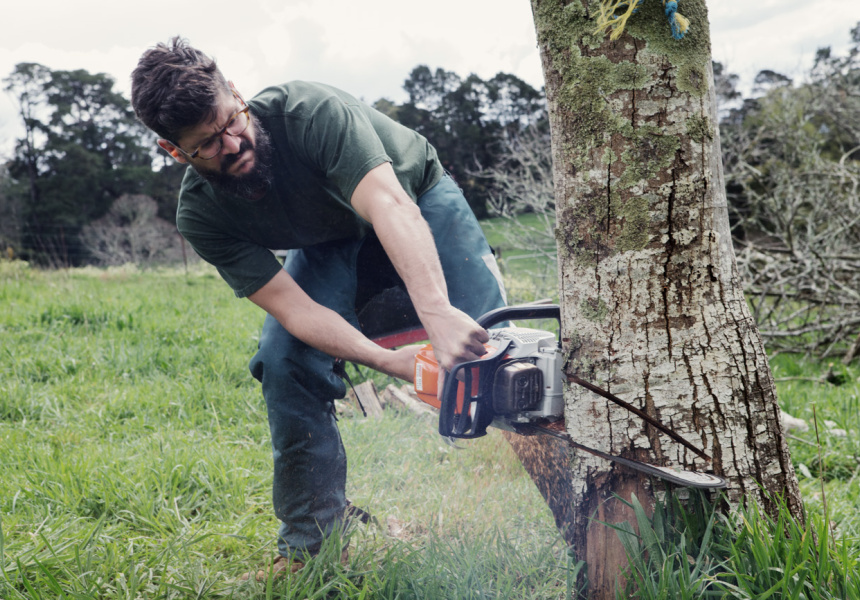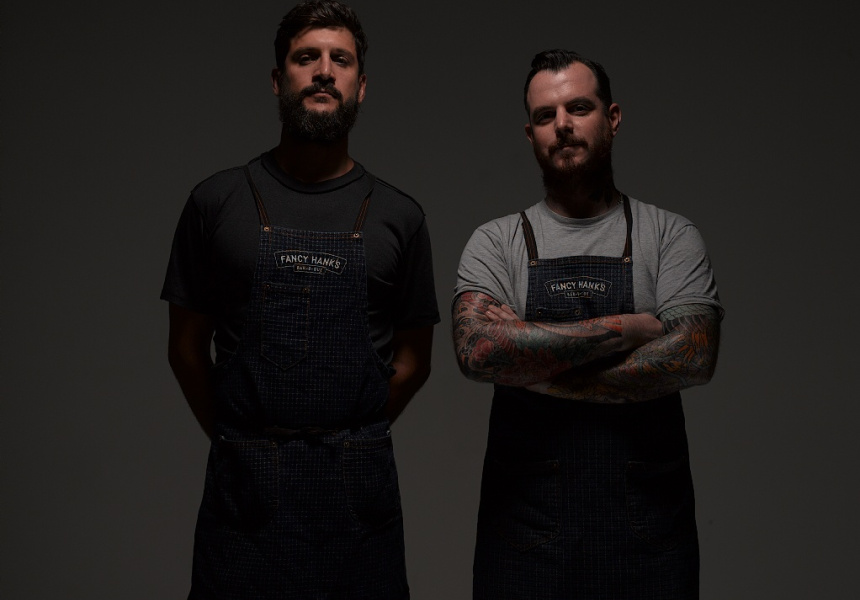Last year, Kent Bell crossed the length of America’s barbeque belt to expand his knowledge on very meaty, low and slow style of cooking. On his odyssey, one half of Melbourne’s premiere portable barbeque institution, Fancy Hanks, discovered American barbeque is anything if not diverse.
“Barbeque in the States if different wherever you’re from,” explains Bell. “You’ve got cattle and beef and brisket in Texas, where the beef ribs are massive. If you’re from Kentucky, it’s all about chicken - hence the KFC thing. If you’re from Carolina, it’s all about pork. If you’re from Kansas city, it’s all about barbeque sauce - they lose their nut on that.”
Like many others, Bell found his way into barbeque via Brooklyn barbeque joint, Fette Sau - a compulsory pit stop on any omnivore’s holiday itinerary, a canteen style outdoor eatery where meat is served by the weight and booze comes in flagons. “I went there and thought, wow, this is pretty crazy,” he recalls. “I didn’t really understand what they were doing, but I liked the change of service, the sort of casual approach to it. And obviously, the product was really good.”
We think you might like Access. For $12 a month, join our membership program to stay in the know.
SIGN UPBack in Australia, Bell was running Smith Street eatery Cavallero when he was asked to come up with something to cook for the Richmond Weekender. Fancy Hank’s Bar-B-Que was born, along with a new frontier of barbecue in Australia.
The idea was simple: find a cool venue - say a park, bowls club or rough-edged pub - bring in the custom-built smokers, cook up some barbecue, move on, and repeat. The concept proved popular, to say the least; Hank’s is currently smoking it up at the Mercat Hotel in Queen Victoria Market ahead of a second stint at the Princes Park Bowls Club this summer. Barbecue lovers work their way through about 20, six kilo briskets each week.
Bell wagers part of the admiration for Fancy Hank’s stems from a broader trend. Dining, he reckons, had to change. “The old restaurant system isn’t the same as it once was,” he says, citing this new casual style of food operation. “And the public’s really savvy. They want to see things that taste really good, but they don’t necessarily want to see nuevo cuisine on a plate.”
Bell’s business partner, Mike Patrick – an old friend (Bell and Patrick worked together at Ladro years ago) recently drafted from behind the wood-fired grill at San Telmo – agrees that there’s been a shift in the way people think about their food. “The whole culture of cooking at home has become so popular in the mainstream,” he says. “The chef doesn’t have to prove themselves by doing fancy food [anymore].”
What appeals to both Bell and Patrick – and their loyal BBQ followers – is barbeque’s authenticity, its lack of airs and graces, its anti-established sentiment.
For Patrick, it’s about getting back to basics and cooking with wood. The pair regularly head up to a secret spot in the Yarra Valley to saw up fragrant chestnut and hazel for their fires. “What appeals to me is just cooking with raw materials,” he says. “There’s something about the heat source, there’s a dryness to it. After 16 hours in the pit smoker, the brisket is black and hard. You’ve got to sharpen your knife just to get through it, then it’s succulent underneath. It’s a textural thing.”
It’s ultimately a do-it-yourself approach, one that doesn’t require space-age kitchens, armies of kitchen hands, Reidel glassware or starched tablecloths. Bell encourages enthusiasts to try it for themselves. When people ask him where to buy an offset smoker for their home, he asks whether they know how to use a welding torch. “If people can cook barbecue well in a Weber, I’ll hire them,” he promises. “That shit is hard. That shit is really hard. That coal is inches away from your meat, and you’re trying to cook it for 12 hours.”
Though they’re both schooled in the traditions of American barbeque, the Fancy Hank’s crew is comfortable with mixing techniques to suit their tastes, picking and choosing whatever they decide works. “For us, American barbeque isn’t about one area of the states. It’s different things in different places,” says Bell. “We don’t add a lot of real tomatoey sauce to our pulled pork. Our brisket’s really simple; we don’t add any sauce to it, we keep the rub to a really salt-and-pepper base. Our pork ribs, we try and really glaze and get it toffee-ish the way you would find them in Kansas City.”
If there’s no agreement on the right way to cook barbeque, there is consensus about when to eat it: “On the dot of six o’clock,” says Bell. “The whole thing with barbeque is that you learn really quickly that you don’t turn up at three o’clock on Friday afternoon, because the pork-ribs are going to be dry and the brisket’s going to be dead. You don’t turn up for dinner at 10 o’clock at night because there’s going to be nothing left. It has a window. These people have been cooking it for ten hours, and they’re going to have it ready then.”
With back-to-back venues lined up and a long list of wedding parties ready to get greasy, things are just getting fired up at Fancy Hank’s. Bell, however, hasn’t forgotten what attracted him to barbeque in the first place. “It’s a pretty cool way to spend an afternoon,” he says. “Just sitting around chatting to people, turning the meat once in a while, and kicking back with a drink in your hand.”
Broadsheet and Bulleit Bourbon have partnered to explore the underground culture of American BBQ together over the next few months.



